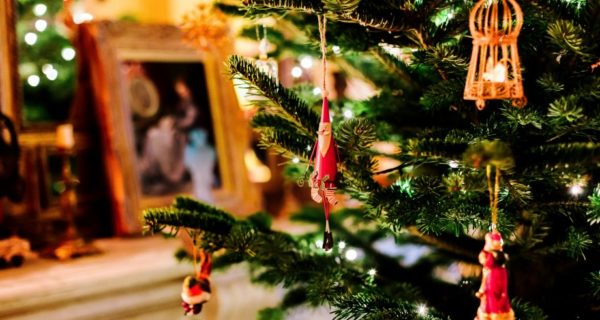The widely-sung carol “The Twelve Days of Christmas” seems very secular. At first glance, it is about someone whose true love has given them a variety of strange and extravagant gifts over the course of twelve days. But did you know that legend has it this odd Christmas song has a hidden, Catholic meaning?
Way back in the 15- and 1600s when Queen Elizabeth was persecuting Catholics in England, Catholic parents weren’t allowed to teach their children the Faith. Jesuit priests, however, found clever ways to teach children the catechism. One of these methods may well have been composing The Twelve Days of Christmas and filling it with secret references to the Catholic Faith which parents could use to instruct their children.
Overlooked by the Protestants, each element in The Twelve Days of Christmas could be seen to have its own Catholic meaning. My true love is God the Father, Who so loved the world He gave His only begotten Son. Next, there is a series of birds listed, and they each have their own meaning as well. The partridge in a pear tree stands for Christ hanging on a different tree (the Cross) to save us from our sins. Two turtle doves are the two testaments of the Bible, the Old and New testaments.
The three French hens symbolize three different things: the Blessed Trinity, the three Theological Virtues, and the Magi (or Wise Guys, as they’re called at my house). I think that they stand for the Wise Guys more than anything, because French hens are foreign to England (and everywhere else except France), and the Wise Guys were foreign to the Jewish town of Bethlehem, where they journeyed to see Baby Jesus. Four calling birds are the four Major Prophets of the Old Testament, as well as the four Gospels. Both the prophets and the Gospels are fitting to be the calling birds because they both call us to better lives.
Taking a break from birds, The Twelve Days of Christmas next tells of five golden rings. These five rings stand for the Pentateuch, or the first five books of the Old Testament (Genesis, Exodus, Leviticus, Numbers, Deuteronomy). The shape of the rings symbolizes God’s love for us, which goes on and on without end.
Now, back to the birds. Six geese a-laying are the six days of creation. The seven swans a-swimming represent no less than seven things: the seven Gifts of the Holy Spirit, the seven Corporal Works of Mercy, the seven Spiritual Works of Mercy, the seven Deadly Sins, the seven Lively Virtues, the seven Sacraments, and the Seventh Day!
Following the seven swans, birds mysteriously vanish from the lyrics, being replaced by people. Eight maids a-milking stand for the eight Beatitudes that Christ preached in His famous Sermon on the Mount. Nine ladies dancing represent the nine Choirs of Angels. If the ladies were going to represent the nine Angelic Choirs, I don’t see why it couldn’t have been nine ladies singing. To me, that makes a whole lot more sense.
Anyway, the ten lords a-leaping are the Ten Commandments. The eleven pipers piping are the eleven Apostles who remained faithful to Christ. I think piping pipers are suitable to represent the eleven faithful Apostles because after the Resurrection they preached the Gospel and made their voices heard, something like pipers do with their music (I guess…I’ve never heard a piper piping). Last but not least come the twelve drummers drumming. The drummers represent the second-largest group of Catholic elements in the song, a grand total of five. They are the twelve original Apostles, the twelve Fruits of the Holy Spirit, the twelve points of belief in the Apostle’s Creed, the twelve Minor Prophets, and the twelve Tribes of Israel.
So, there you have it. With a little allegorical digging, the seemingly secular carol “The Twelve Days of Christmas” may well be full of hidden Catholic truths. This can leave us wondering: do any other Christmas carols have an interesting story? Leaving that question open for you to think about, I would like to wish everyone a Merry Christmas and a Happy New Year!
